Sergeant Herrmann ‘Harry’ Topp: 2nd Light Horse Regiment
By JOL Admin | 9 November 2015
Guest blogger: Lockyer Valley Regional Council.
Displayed in the ‘Walk of Fame’ inside the Lockyer Valley Cultural Centre, Gatton, are ten photographic portraits of Lockyer Valley locals who fought in the First World War. The portraits formed a component of the recent Queensland Government-sponsored exhibition ‘Queensland Transport Museum Salutes 100 Years of ANZAC’, which was on display in the adjacent Queensland Transport Museum from 11 April to 30 June 2015, and featured First World War motorised and horse drawn machinery.
This post is the third in a series which will feature the ten Lockyer locals whose portraits and biographies are in the ‘Walk of Fame’. Where possible, we will supplement their stories with some images from the State Library of Queensland or Australian War Memorial collections. We acknowledge the Lockyer Valley Regional Council, Derek Barry and Russell Tattam for allowing us to share their content, which can also be found on the Lockyer Valley Libraries catalogue and Flickr.
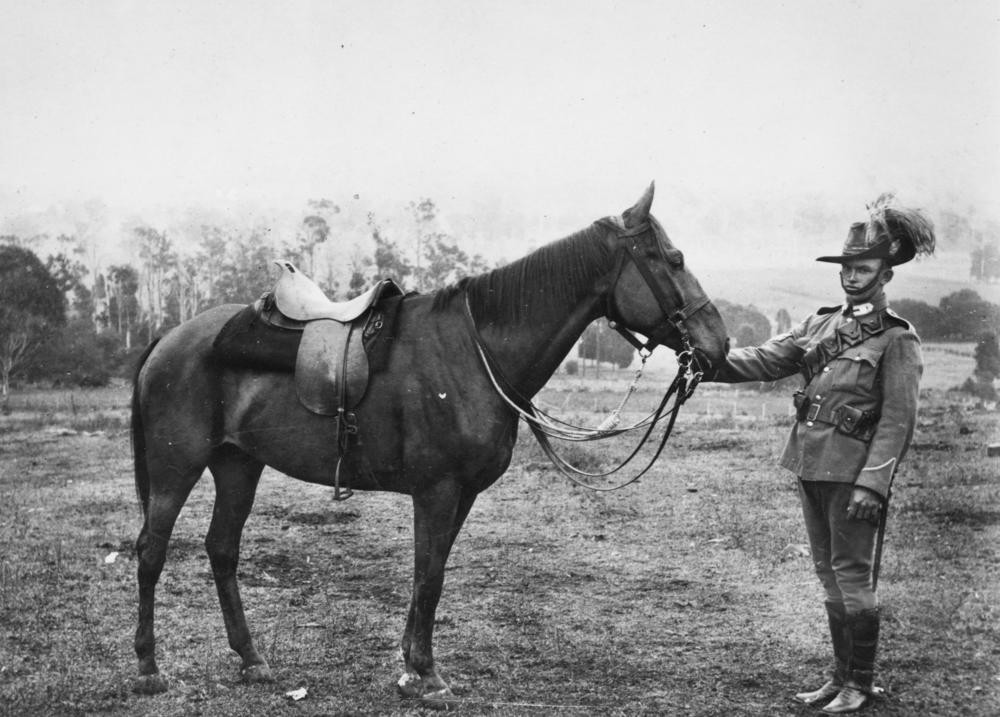
Harry Topp posing in his Light Horse uniform ca. 1915, John Oxley Library, State Library of Queensland Neg. 65822
Herrmann “Harry” Topp was born on June 2, 1892, the second son of Ernst and Wilhelmine Topp. His father Ernst Heinrich Karl Topp was born in 1870 in Brandenburg, Germany and came to Australia around 1884 aged 14 or 15. His mother Wilhelmine Julia Neuendorf was born in the Fassifern Valley also in 1870 and the pair married aged 19. They settled at Julia’s parent’s Fassifern Scrub property and farmed pigs and cattle. Harry spoke German at home and learned English at Blantyre school (the building is now at Laidley Pioneer Village) and then at Teviot school.
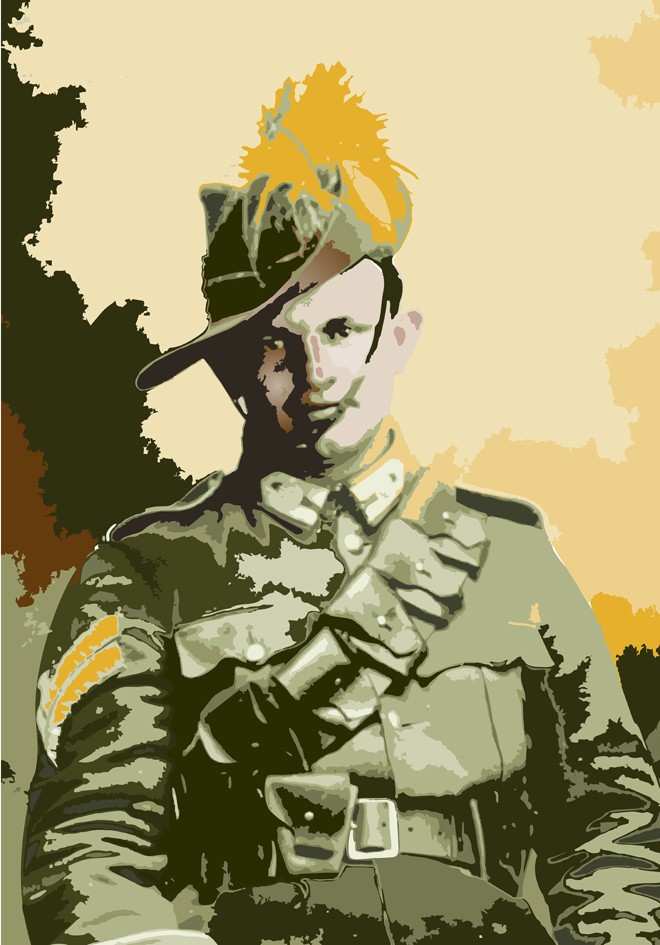
Hermann 'Harry' Topp : Saluting 100 years of ANZAC history. Lockyer Valley Regional Council BRN106074
In 1904 the family, with eight children, moved to Lilydale in the Lockyer Valley. Harry and elder brother Ernest joined the 13th Light Horse in 1910 using their own horses and serving under Captain Tom Logan. When war broke out in 1914, his mother urged him not to enlist. Tom Logan told his men he had enlisted and asked for volunteers but no one stepped forward. According to an observer, Tom looked at Harry and said, “Come on Harry, I expected you to be one of the first to step forward.” Despite his mother’s fears, Harry was one of 22 volunteers who enlisted that day.
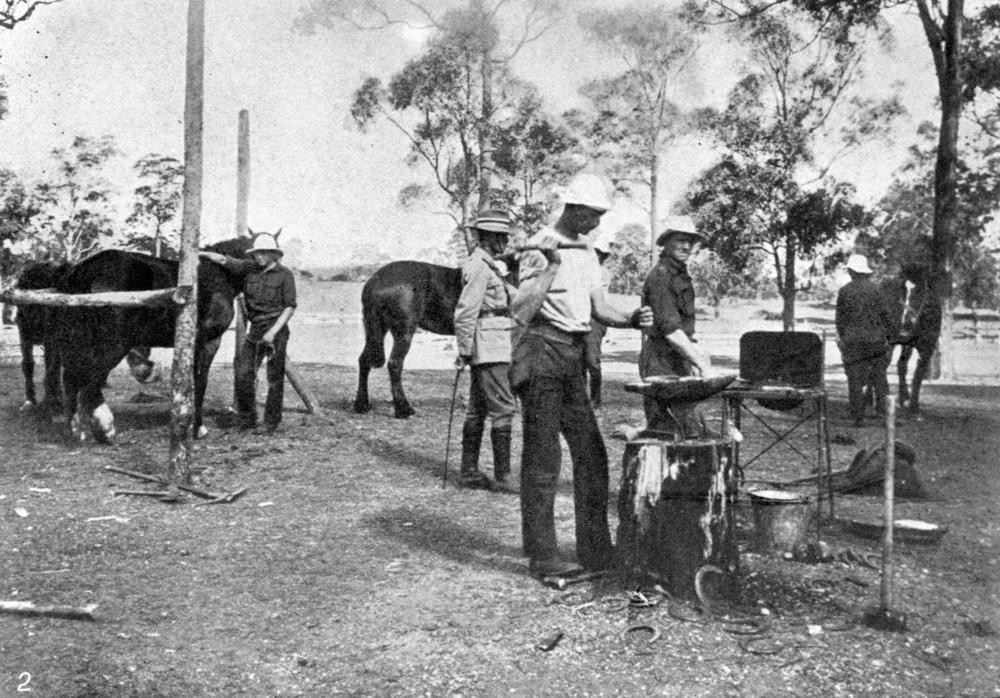
Smiths forge in the 2nd Light Horse regiments camp, John Oxley Library, State Library of Queensland Neg. 146045
Harry went into camp at Enoggera on August 24, 1914 as part of the 2nd Light Horse regiment (service number 104). Grazier Sydney Kidman gifted the regiment 50 horses and Harry and his friend Pat Linnan had to break them in. They left for England on September 24, 1914 on the Star of England and arrived at Alexandria, Egypt two months later.
Harry was assigned to “A” Squadron as it left for Gallipoli and he quickly adjusted to the war. “When you first get under fire and hear the bullets and shells flying about, it gives you an awful feeling but after you get going you seem to forget all about it,” he later said. Harry served at Quinn’s Post and later at Pope’s Hill. There he was hit by Turkish shrapnel and he was taken away on a hospital ship to Heliopolis, Egypt. He convalesced in a makeshift hospital and although his leg did not heal properly for a couple of years he was sent back to Gallipoli on August 4, 1915.
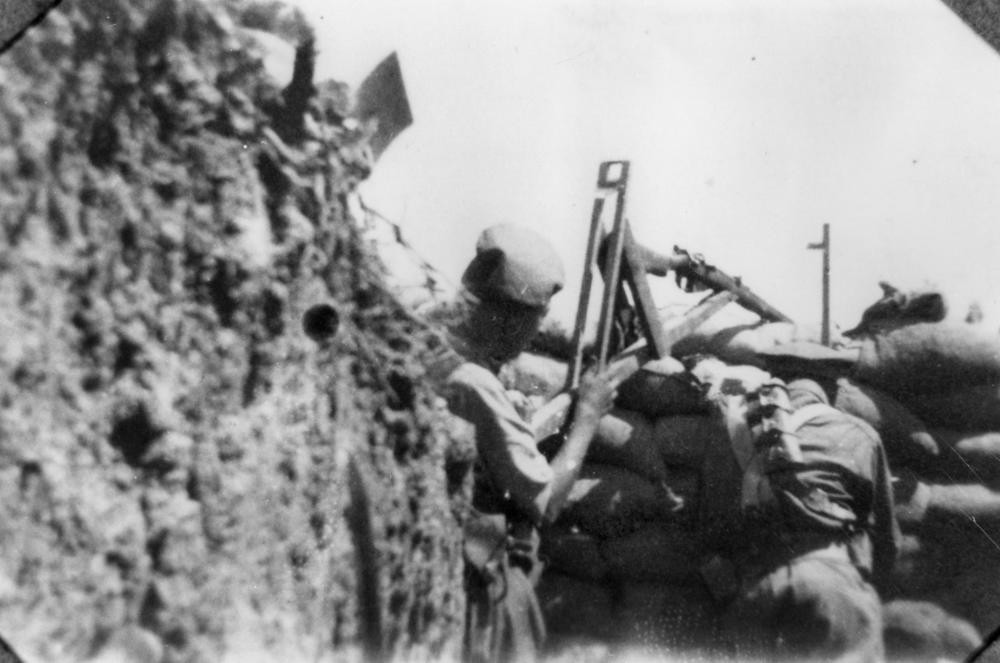
Soldier poised with his rifle at Quinns Post Gallipoli, John Oxley Library, State Library of Queensland Neg. 167056
He saw Major Logan die at Quinn’s Post before his regiment moved to Suvla Bay. Harry contracted jaundice a day before the Gallipoli evacuation and recovered on the Greek isle of Lemnos.
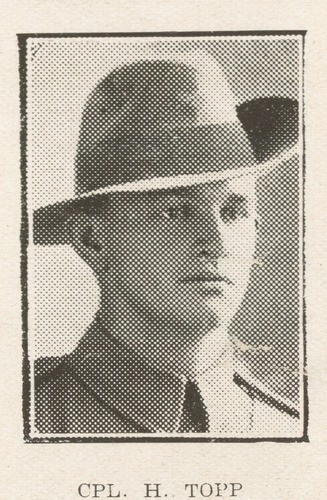
Harry Topp in The Queenslander Pictorial supplement, 24 July 1915
He joined the 4th Pioneer Battalion (4th Division) in Egypt and was dispatched to France in July 1916. Their job was to build tunnels, railways and bridges and he survived fierce shelling at Bullecourt. He also built bridges for the attack at Messines and saw action at the Somme and Ypres, where he was camped near Hell Fire Corner. After supervising underground work towards the end of the war, Harry was assigned to England for officer training. He contracted Spanish flu but survived thanks to treatment in a nearby hospital.
He met a Welsh girl Gladys Ethel May Williams and they engaged on New Year’s Eve 1919 and married in Wales on August 23, 1919. They left for Australia on October 29 on a captured German boat named the Wha He-He. They disembarked at Sydney and took a train to Brisbane and on to Helidon where he introduced Gladys to the family.
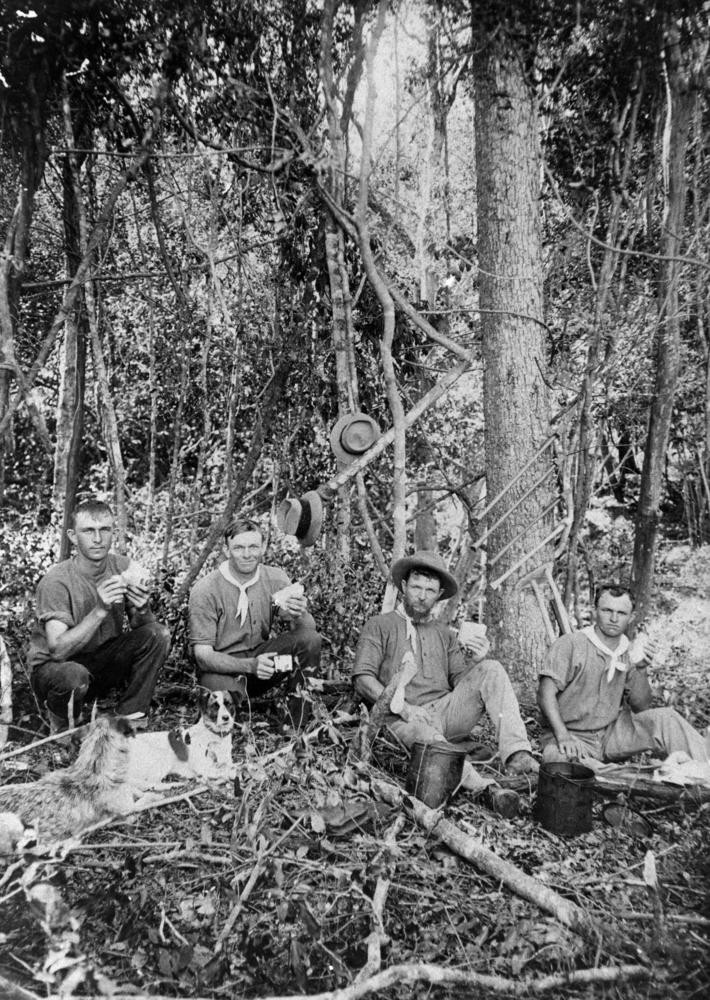
Scrub fallers from left Harry Profke, Bill Neuendorf, Wilhelm Neuendorf and Harry Topp, John Oxley Library, State Library of Queensland Image: ba0775
After the war, Harry had difficulty finding work. He worked as a timber cutter and saw miller and then took up share farming at Forest Hill. Harry and Gladys had three children. The eldest child, Donald, died aged 14. The family later bought their own farm at Clifton. Harry’s health began failing in the 1950’s. The family sold the Clifton farm and moved to Labrador, buying a set of shops. Harry and Gladys retired on the Gold Coast. Harry died on 27 May, 1986 and is interred in the Allambe Memorial Park at Nerang.
Comments
Your email address will not be published.
We welcome relevant, respectful comments.